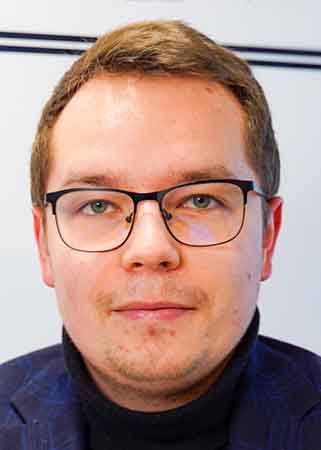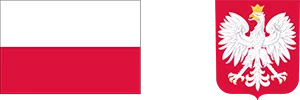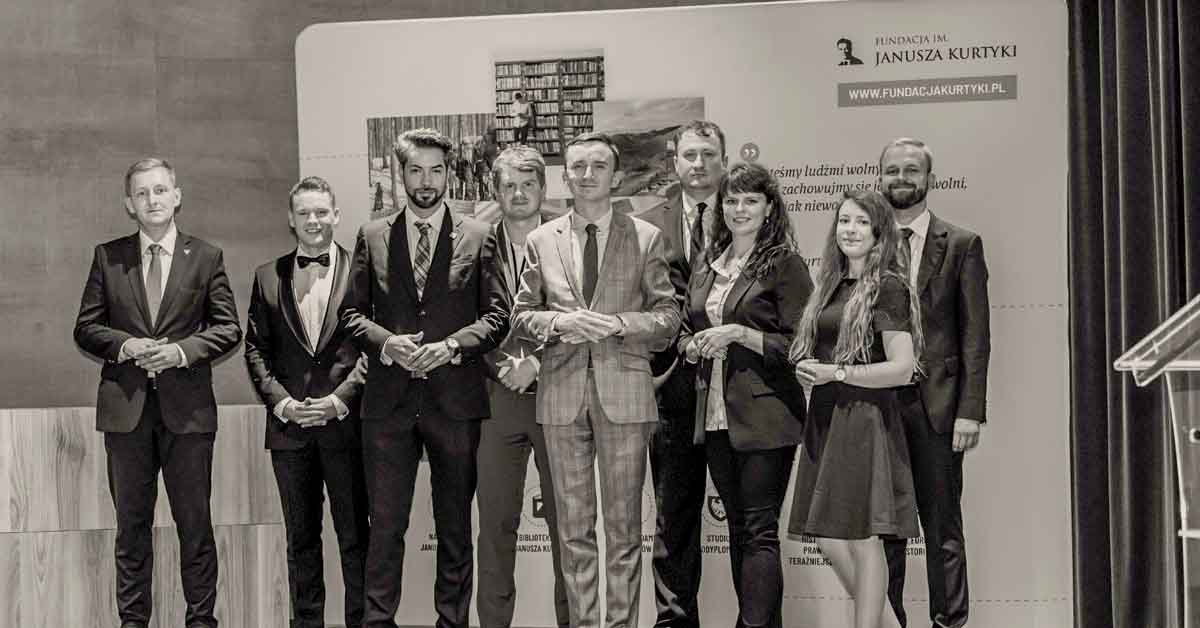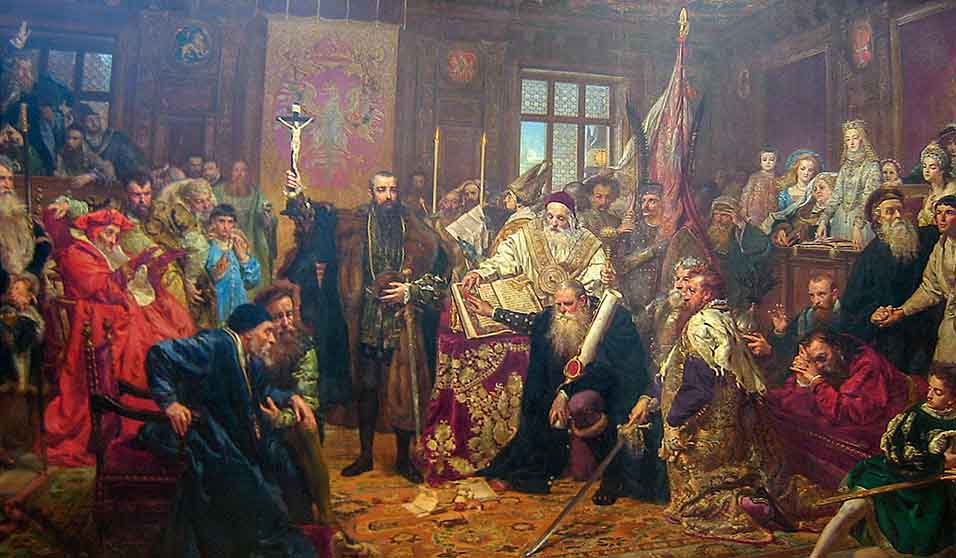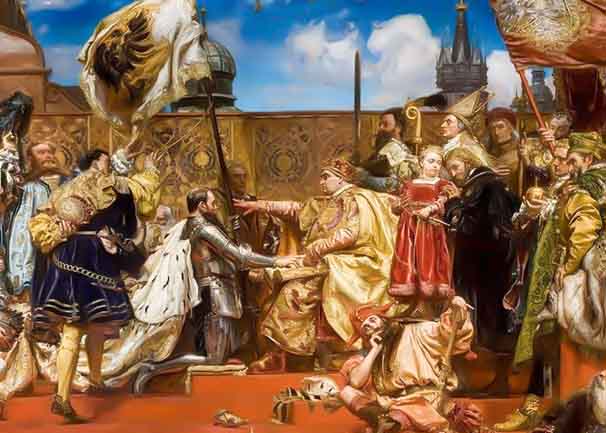The year 1610 marked a significant turning point in the history of Eastern Europe. During the Polish-Lithuanian Commonwealth war (1609-1618), two significant events took place: the Battle of Klushino (July 4) and the subsequent entry of Polish-Lithuanian troops into Moscow. Two years later, on November 7, 1612, the garrison stationed in the Kremlin was forced to surrender it to the Russians. Ultimately, the war ended favorably for the Polish-Lithuanian Commonwealth. The Armistice of Deuvilin granted it the largest territorial extent in history—approximately 1 million square kilometers. However, the Muscovite state was not conquered, and in the following century it grew to become the largest empire in this part of Europe and became a partitioning power of the Polish-Lithuanian Commonwealth. The question of whether Moscow could have been permanently subjugated by the Polish-Lithuanian Commonwealth before it fell victim to it resonates to this day.
The origins of the war that broke out in 1609 date back at least several years. In 1603, a man appeared in the Polish-Lithuanian Commonwealth claiming to be Dmitri, son of Tsar Ivan the Terrible, who was believed to be dead. The impostor, as he came to be known, claimed he had a right to the Moscow throne, and that the current Tsar, Boris Godunov, was merely a usurper who had previously plotted an assassination attempt on him to seize the tsar's crown. Dmitri found supporters in the Polish-Lithuanian Commonwealth. Although neither King Sigismund III nor the Sejm officially supported him, with the monarch's tacit consent and the support of some of the borderland magnates, Dmitri began to gather forces around himself to help him regain the throne. Some of the Polish-Lithuanian Commonwealth's elite, primarily those around the king, believed they could exploit this situation to place a loyal figure on the Muscovite throne, thereby ensuring peace in the East and freedom of action on the Baltic Sea, where Poles and Lithuanians competed with the Swedes. The boldest even conceived plans for a union with Moscow.
In 1604, Dmitry set out for Moscow with the support of the private armies of some magnate families, but not the entire Polish-Lithuanian Commonwealth. The Russians welcomed him willingly and willingly surrendered the tsar's crown (1605), but a boyar conspiracy quickly formed against Dmitry, resulting in the death of the pretender and the seizure of power in Moscow by Vasily Shuyskyi (1606).
Already in 1607, another pretender, claiming to be Dmitry, opposed his rule, and his support grew in direct proportion to the chaos prevailing in Muscovy. However, the Polish-Lithuanian Commonwealth continued to refrain from intervening, as it was itself grappling with a civil war in the form of the Zebrzydowski Rebellion (1606-1607). Only the magnates' private troops, which had set off for Moscow with Dmitri I, were present. Tsar Vasily Shuisky sought an agreement with Sigismund III, asking him to force the magnates to leave Muscovy (1608). However, when they refused to withdraw their support for Dmitri II, he concluded an alliance with Sweden (1609). This alliance was aimed against the Polish-Lithuanian Commonwealth and undermined its interests in the east and on the Baltic Sea. The outbreak of war became inevitable.
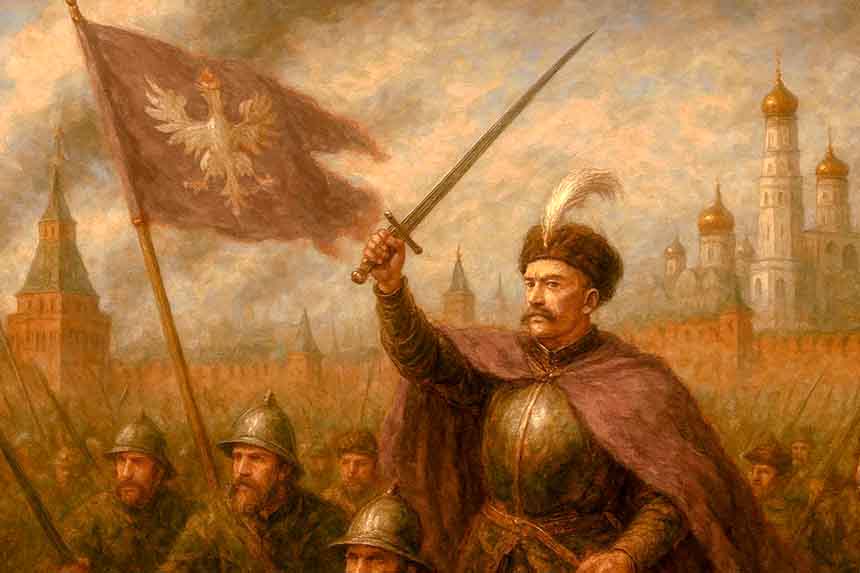
Poles in Moscow, 1610 (Source: DlaPolonii.pl)
In September 1609, Sigismund III crossed the border into Muscovy. He could count on only 11,000 soldiers – the treasury had no money for more, given the nobility's reluctance to wage war and pay higher taxes for it. However, the king had at his side one of the best commanders of his time – Hetman Stanisław Żółkiewski. On the way to Moscow, a formidable obstacle had to be overcome – the Smolensk Fortress. Unable to capture it quickly, Polish-Lithuanian forces began a siege that lasted until mid-1611. While the main forces were concentrated at Smolensk, Hetman Żółkiewski, at the head of small detachments of 2,700-3,600 soldiers, routed the combined Muscovite-Swedish forces of 22,000-25,000 at Klushino. He then entered Moscow and garrisoned the Kremlin (autumn 1610). He didn't take the city by terror—the Russians opened the gates themselves. The boyar elites concluded an agreement with the hetman, according to which King Sigismund III's son, Władysław, would become the new tsar. However, the agreement was never implemented.
In 1611, a revolt broke out against the Polish presence in the Kremlin. The recent civil war in Moscow quickly escalated into a defensive war against the "Lachs," further fueled by the Orthodox Church, which feared the growth of Catholic influence in the country. The Commonwealth could only intervene effectively if the Sejm (parliament) agreed to a costly campaign and the nobility themselves had the will and determination to take control of Moscow. Neither of these conditions, however, was met. There was strong opposition within the country to the policies of Sigismund III, who was accused of absolutist tendencies. Most of the nobility were unwilling to bear the costs of the "Muscovite adventure," believing that the king was deliberately pushing the Commonwealth into war with Moscow to gain an eastern ally in the struggle for the throne of his native Sweden, thus pursuing personal ambitions rather than the interests of the people. The elites of the Polish-Lithuanian Commonwealth hoped to regain the lands that Moscow had torn from Lithuania in previous wars, but they did not think about subordinating the eastern neighbor of the Polish-Lithuanian Commonwealth.
In 1612, the Polish-Lithuanian Kremlin forces were forced to capitulate after failing to receive timely support. Mikhail Romanov replaced Władysław Vasa as tsar. Thus began the rule of a dynasty that would rule Russia until the October Revolution (1917).



